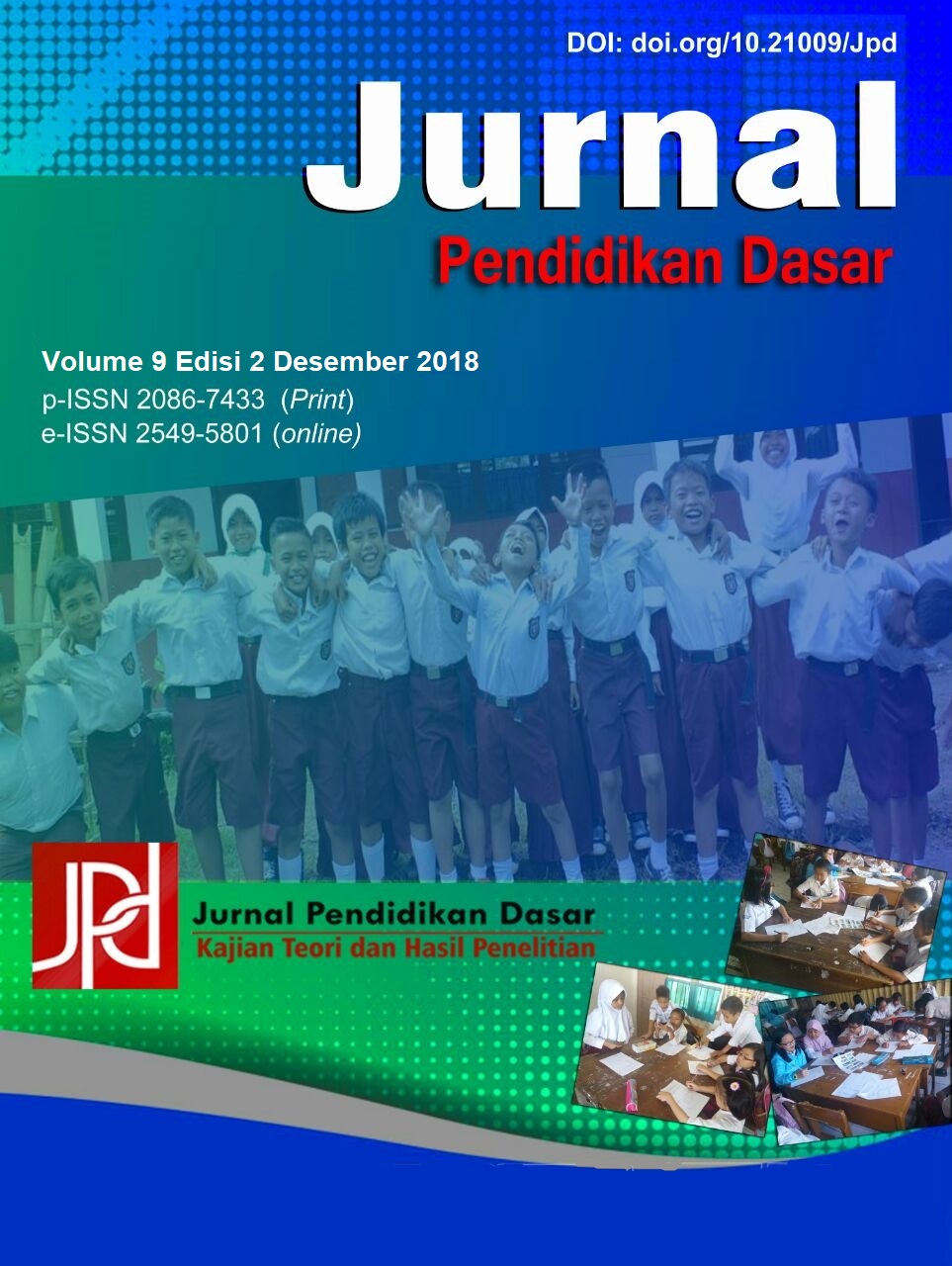ANALISIS KEMAMPUAN BERPIKIR KRITIS SISWA DALAM PEMBELAJARAN MENULIS NARASI DI SEKOLAH DASAR
Keywords:
critical thinking, narrative, writingAbstract
The problem this research is the students difficulties in critical thinking. This study aims to determine the critical thinking skills in learning to write a narrative of class V students in SDN Lengkong Subdistrict Bandung, the efforts of teachers in developing student on critical thinking skills in writing narrative and constraints faced by teachers and students on developing of critical thinking in writing narrative. Research sample at Pelita primary school and Karangpawulang primary school using purposive sampling technique was done to 283 students and 5 teacher. Data collection techniques in this study is use observation, test and interview. Data analysis techniques in this study using quantitative descriptive analysis. The results of study showed that 1) the average critical thinking ability of class V students amounted to 75.38 and is moderate. The highest indicator is identifying relevant information from the narrative text is 83.40% and the lowest indicator is problem analysis on the narrative text is 63.48%, (2) Efforts by teachers in developing critical thinking of students on learning writing narrative through assignment, question and answer and provide direction (3) Constraints faced by students in the development of critical thinking in writing is the students difficulty in solving problems and difficulties in reveal idea into the form of writing. While the constraints faced by teacher do not know the methods or techniques in learning and no assessment of student critical thinking. This is because the teacher does not understand the indicators of the critical thinking.
References
Ataç, B. A. (2015). From Descriptive to Critical Writing: A Study on the Effectiveness of Advanced Reading and Writing Instruction', Procedia - Social and Behavioral Sciences, 199, 620–626. https://doi.org/10.1016/j.sbspro.2015.07.588
Atmazaki.(2006).Kiat-kiat Mengarang dan Menyunting. Padang: Yayasan Citra Budaya Indonesia.
Brandt, R. (1990). On Knowledge and Cognitive Skills: A Conversation with David Perkins, Educational Leadership, 47(5), 50–53. Retrieved from http://www.ascd.org/ASCD/pdf/journals/ed_lead/el_198605_brandt2.pdf
Iskandar. (2009). Psikologi Pendidikan (Sebuah Orientasi Baru). Ciputat: Gaung Persada
Nitko, A. J. (1996). Educational Assessment of Student. New Jersey: Prentice Hall.
Potts, B. (1994). Strategies for Teaching Critical Thinking, 4(3), 1–3. Retrieved from http://pareonline.net/getvn.asp?v=4&n=3
Rachmadtullah, R. (2015). Kemampuan Berpikir Kritis dan Konsep Diri dengan Hasil Belajar Pendidikan Kewarganegaraan Siswa Kelas V Sekolah Dasar. Jurnal Pendidikan Dasar, 6(2), 287. https://doi.org/10.21009/JPD.062.10
Ryan Ruggiero, V. (2009).The Art of Thinking. A Guide To Critical and Creative Thought. San Fransisco: Pearson Education, Inc.
Santrock. (2007). Perkembangan Anak (11th ed.). Jakarta: Erlangga.
Sugiyono.(2009). Metode Penelitian Kuantitatif dan R&D. Bandung:CV Alfabeta.
Sunaryo K., W. (2011). Taksonomi Berpikir. Bandung: Rosda.
Tarigan, H. G. (2008). Membaca: Sebagai suatu Keterampilan Berbahasa. Bandung: Angkasa.
Tilaar, H. A.(2012). Pengembangan Kreativitas dan Entrepreneurship dalam Pendidikan Nasional. Jakarta: Buku Kompas.
Yaumi, Muhammad. (2012). Pembelajaran Berbasis Multiple Intelligences. Jakarta: Dian Rakyat.
Downloads
Published
How to Cite
Issue
Section
License
Jurnal Pendidikan Dasar





















